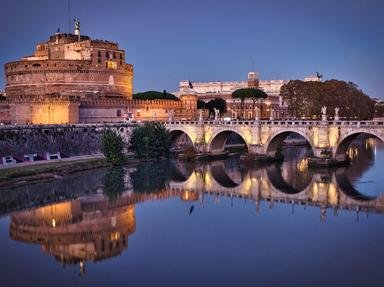Quiz Answer Key and Fun Facts
1. These two famous cities were completely wiped from the face of the earth in 79 AD from a volcanic eruption. Can you name them?
2. Which commercial city was founded by the Nabataean Arabs in the 6th century BC that is near modern day Jordan. Also (as a little hint), "Indiana Jones and the Last Crusade" had several scenes with the ruins in the background.
3. This city, in modern-day Turkey, may have existed or it could be just a Greek myth. Nevertheless, great generals through time have lived in the shadow of Homer's heroes.
4. This Greek city state was famous for its warriors and was home to such leaders as Menelaus and Leonidas.
5. Marhabal once said to his general 'you know how to win a battle, but not how to use it' when the Roman empire was invaded in 218 BC by these people whose capital sat strong on the north coast of Africa. What is the name of their civilization?
6. This ruined city was home to King Phillip II of Macedon, who was the father of Alexander the Great.
7. The famous Germanic epic "The Nibelunglied", first committed to writing around 1200 AD in Bavaria or Austria, tells of a Burgundian tribe ruled by a barbarian chieftan King called Gunther or Gundahari (both the same people, just different names). His family were called the Gebicungs and included a woman named Gudrun, who became Attila the Hun's wife. What is the name of this city, that's still standing today by the banks of the Rhine?
8. The Romans called this British city Eboracum, the Anglo-Saxons called it Eoferwic and the Vikings called it Jorvik. But what do we now call it?
9. This ancient city is by far the most mysterious. Alexander the Great died here and such famous Kings as Darius, Nebuchadnezzar and Hammurabi have ruled over its Mesopotamian lands.
10. This city is not that old in comparison to the others. Nevertheless, this city is so amazing that it outshines several of the others due to its construction. Having an altitude of 8,000 feet, this city was abandoned by the Incas as a result of smallpox and civil war until it was found in 1911 by Hiram Bingham.
Source: Author
durendal
This quiz was reviewed by FunTrivia editor
bloomsby before going online.
Any errors found in FunTrivia content are routinely corrected through our feedback system.


